Skiptabækur og dánarbú 1740-1900: lagalegar forsendur og varðveisla.
Ómældar upplýsingar um lífskjör Íslendinga frá miðri 18. öld til fyrstu ára 20. aldar bíða lesturs, úrvinnslu og túlkunar í vannýttum gögnum á Þjóðskjalasafni Íslands í Reykjavík. Uppskriftir dánarbúa, skiptabækur og uppboðsbækur sýna lausafjáreign mörg þúsund einstaklinga af öllum stigum, jafnt karla sem kvenna; hér birtast búsáhöld, smíðatól, veiðarfæri, fatnaður, sængurföt, bækur og speglar, svo fátt eitt sé talið. Nokkrir fræðimenn hafa nýtt þessi gögn um afmörkuð viðfangsefni, en aðrir ekki sem hefðu haft gagn af þeim, svo sem við athuganir á verkmenningu og atvinnuháttum. Þörf er á yfirgripsmikilli og nákvæmri úttekt á þessum heimildum svo þær nýtist sem vert væri til rannsókna á einstaklingum, landsvæðum og félagshópum. Hér er lagður grundvöllur að slíkri könnun, og þá jafnframt að markvissri úrvinnslu, með greinargerð um lagalega umgjörð og varðveislu þessara gagna.
ICELANDIC PROBATE INVENTORIES 1740–1900
Probate inventories have been systematically utilised for some decades by European and US historians who study consumption, living standards and material culture. In Iceland, however, these remarkable sources have been neglected, except for limited studies on book ownership (Sólrún B. Jensdóttir 1968, 1971), cultural differences among farmers (Christina Folke Ax 2002) and housing conditions (Hörður Ágústsson 2004). Otherwise, probate inventories have been used only sporadically in biographies and works on local history. The main argument of this article is that these documents deserve closer attention, in particular because they reveal in detail the everyday struggle of ordinary Icelanders for a decent life. A project now underway to index the over 20,000 extant inventories will pave the way for scholars who wish to take advantage of these sources in their research. Fortunately, these documents have been preserved quite well in every region of Iceland, though there are occasional gaps. The preliminary figures presented in Tables 1 and 2 show steadily increasing numbers of probate inventories from around 1780 until 1870, after which there is a decrease, most likely due to new legislation in 1878. Both the new laws and the previous legislation are analysed here in some detail, along with the administrative practices of the officials responsible for registering these inventories: sýslumenn and hreppstjórar. In 1769, the inheritance provisions of the 1687 Norwegian book of law (Norske lov) were introduced in Iceland, stipulating that whenever inheritors were (1) minors, (2) not direct descendants of the deceased, or (3) absent, a probate inventory should be prepared and the belongings then divided by public officials. If all heirs were adults, however, they were themselves allowed to negotiate this division and no inventory was registered, which means that the extant inventories are not completely representative of the adult population. Another group not represented are those who were dispossessed and owned little or no property. Such limitations have to be considered when investigating probate inventories, but if approached with discretion, this material is rich enough to provide abundant new knowledge and a fresh understanding of Icelandic society, especially in the nineteenth century.

